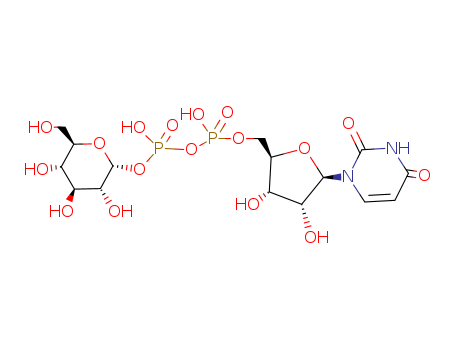- Chemical Name:Uridine-5'-diphosphate-glucose
- CAS No.:133-89-1
- Molecular Formula:C15H24N2O17P2
- Molecular Weight:566.306
- Hs Code.:
- European Community (EC) Number:205-121-4
- UNII:V50K1D7P4Y
- DSSTox Substance ID:DTXSID00157902
- Nikkaji Number:J9.610E
- Wikipedia:Uridine_diphosphate_glucose
- Wikidata:Q424649
- Pharos Ligand ID:BGN6JVYR4JV6
- ChEMBL ID:CHEMBL375951
- Mol file:133-89-1.mol
Synonyms:Diphosphate Glucose, Uridine;Diphosphoglucose, Uridine;Glucose, UDP;Glucose, Uridine Diphosphate;UDP Glucose;UDPG;Uridine Diphosphate Glucose;Uridine Diphosphoglucose





